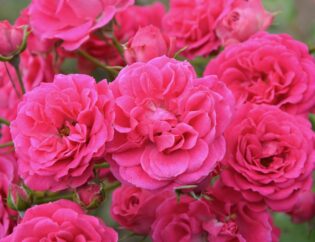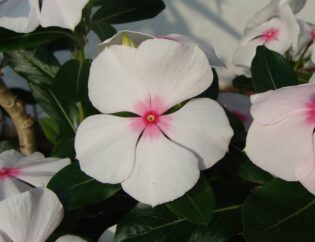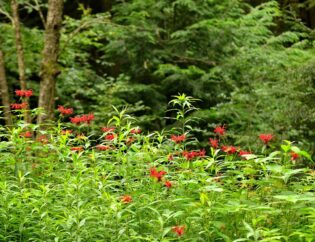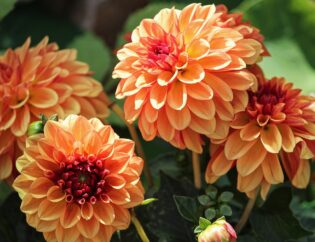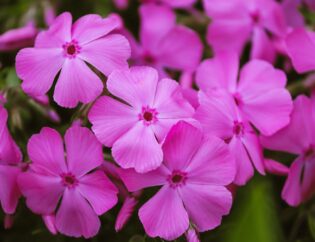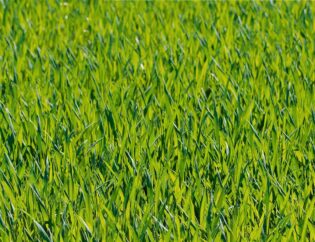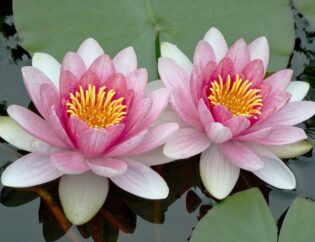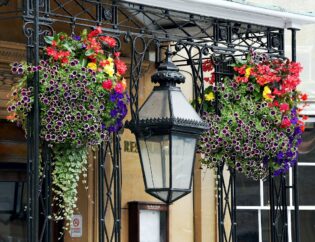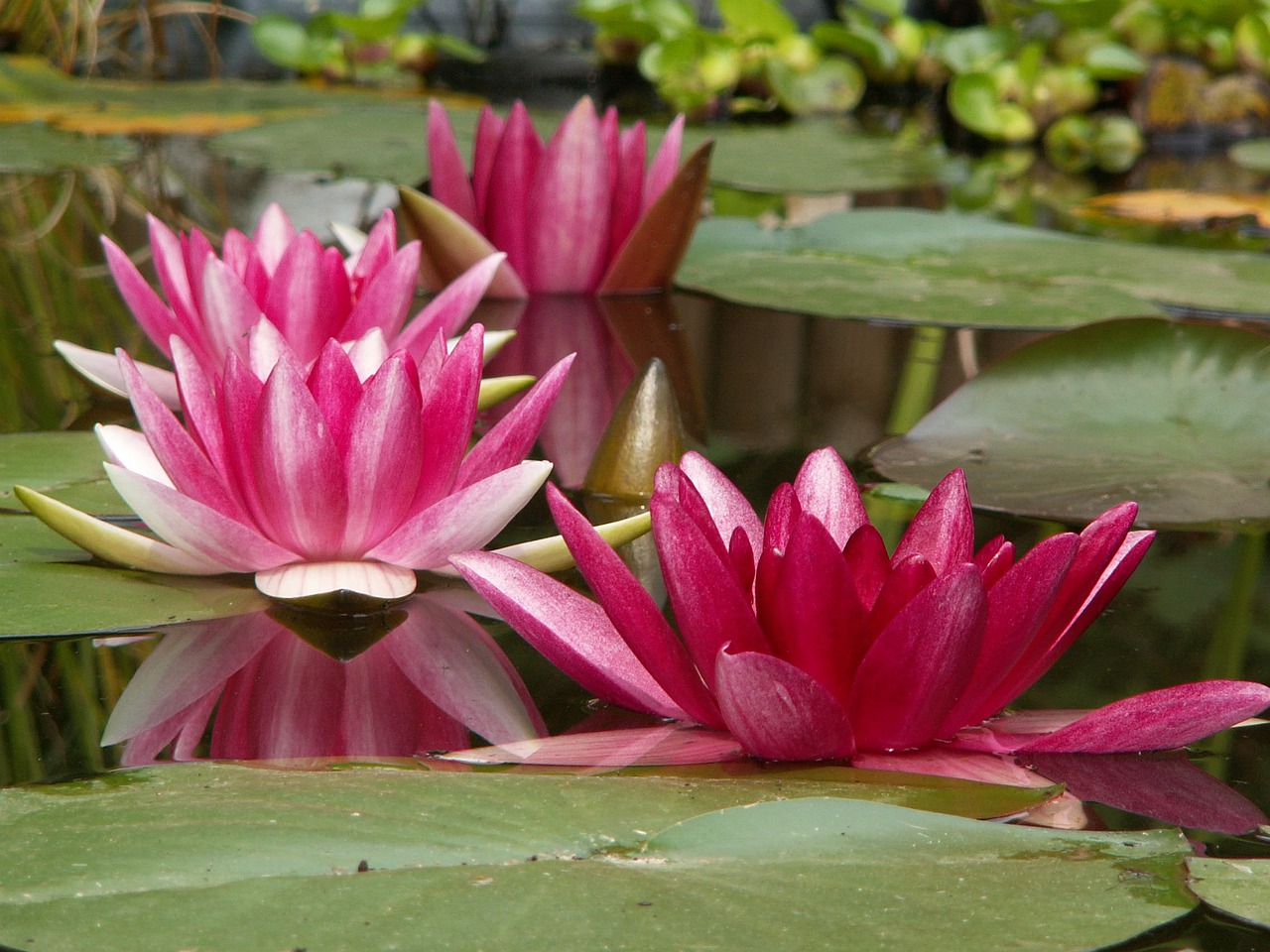
A beautiful backyard pond is a landscaping dream for many homeowners. After all, watching shining koi and goldfish meander through clear, cool water as they explore a water lily garden is a very relaxing way to unwind after work.
But sooner or later, the pond can turn brown, green, and murky. Don’t worry, it’s a common problem and with some TLC that water feature can sparkle again!
Check out how to get clear pond water and keep it that way right here!
What Causes Murky Pond Water?
A pond isn’t a pristine swimming pool full of chemicals to keep the water free of bacteria and other living things. Instead, it is a vibrant miniature ecosystem full of life.
And that’s what that green stuff is. There are tons of tiny single-cell algae going about their daily life, completely unconcerned that they are dirtying up somebody’s pond water! Furthermore, some algae release toxins that are harmful to pets and people.
The algae grows and thrives because of excess nutrients in the pond. Homeowners can avoid the murky water by avoiding the excess nutrients. Here’s how to do it.
Keep Things Cleaned Up
Organic matter that falls into the pond will sink to the bottom and begin breaking down. As it decays, it releases nutrients into the water. Thus, the first step for getting clear pond water naturally is to keep the pond clear of fallen leaves, debris, sediment, and other sorts of build up.
This chore isn’t too hard and can be scheduled alongside other lawn care maintenance tasks.
Simply use a pond skimmer regularly to remove any bits of debris that fall into the pool. Sludge on the bottom can be cleaned out with a pond vacuum. Of course, work carefully if your pond contains fish and avoid damaging the pond liner.
For easy future maintenance, consider planting evergreens like boxwood or arborvitae around the perimeter of the pond. Ferns are great as well. Deciduous perennials can still be used, just be prepared for seasonal cleanup when the leaves drop in autumn.
Control Nitrogen
Nitrogen is a rich source of nutrition for algae. Thus, excess nitrogen in the water will encourage algae growth.
Unfortunately, there are plenty of sources that add nitrogen to the water, especially if there are fish. Ammonia, which comes from fish waste, turns into nitrite which then turns into nitrate which is pure fertilizer for algae.
To combat this issue, homeowners should add aquatic plants. These will use up the excess nitrogen, leaving less for the algae.
Add a Filter (Or Upgrade Yours)
Adding a filter will help clean debris and algae from the water, making it easier to keep the water clear. However, many homeowners find that a regular filter isn’t enough.
In that case, upgrade to a biofilter. This type of filter has a whole bunch of nooks and crannies inside that encourages beneficial bacteria to grow. This bacteria convert waste from fish and decaying plant matter to less harmful substances. They are particularly useful for ponds with fish.
And if nothing is cutting down the algae? Consider adding a UV sterilizer to the system. As water is pumped through the filter and returned to the pond, ultraviolet light is used to kill algae in the water.
Use Activated Charcoal
Activated charcoal is one of the best treatments for both clean and clear pond water. The substance is a rock star when it comes to removing organic matter from pond water.
This includes dissolved organics like tannins or discolorations caused by leaves and other organic debris. Plus, it absorbs many odor-causing substances that can make a water feature smell unpleasant.
Don’t Overstock the Fish
Lots of koi and goldfish in a pond make for a colorful addition to any landscaping. However, more fish equals more fish waste which eventually means more nitrates in the water for the algae to eat.
Additionally, an overstocked pond can be low in oxygen if the surface isn’t agitated and high in waste products if there are more fish than the filter can handle.
For the best results, avoid overstocking the pond. Instead, keep the stocking manageable and enjoy the healthy fish and clear water.
Don’t Overfeed the Fish
Everybody loves an all-you-can-eat-buffet, right? Yep, especially fish, but overdoing it with the fish food will lead to green, gunky pond water.
For this reason, only feed what the fish will eat within a few minutes. Anything left over will turn into debris that decays on the floor of the pond, releasing more nitrogen into the water.
Don’t Disrupt Beneficial Bacteria
Most people think of bacteria as a bad thing. However, for clear pond water a healthy amount of good bacteria is necessary. This is especially true if there are fish living in the pond.
Avoid actions that will harm the beneficial bacteria growing in the pond. These include power washing the pond rocks or surroundings (hello algae blooms), adding harsh chemicals, or allowing the pond to dry out.
Increase the Oxygen
This good bacteria (as well as the fish) need plenty of oxygen in the water to survive. This is especially true in the summer months as it is harder for warm water to hold onto oxygen. Fish gasping at the surface of the water is a critical indication there isn’t enough oxygen.
Add a fountain feature, bubbler, or waterfall to break the surface of the pond. This aerates the pond and ensures there is plenty of life-giving oxygen in the water.
Have a Project in Mind?
Our landscaping professionals at Atlanta Turf & Tree have 35 years of combined experience turning Atlanta-area yards into works of living, lasting art. Contact our landscaping services experts to get going on your next project!
